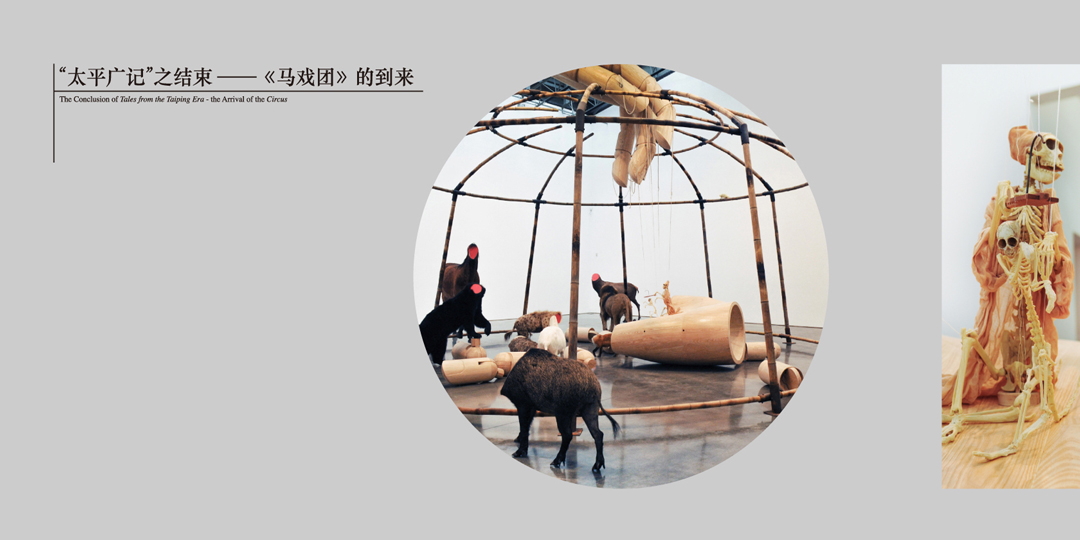
The Conclusion of Tales from the Taiping Era – the Arrival of the Circus
2014.10.17 - 2015.03.31
The Circus made by Huang Yongping in New York in 2012 was originally to be part of the Tales form the Taiping Era exhibition, but the work did not arrive in time due to various reasons. When the work finally arrived after its long journey, the show had already come to its end.
Despite the conclusion of Tales from the Taiping Era, the time-space continuum created by the exhibition, indicating the power of omens, unnatural events and visions still remains. The delayed arrival of the Circus became an opportunity to re-start the journey. Today, the Circus is not just a rhetorical metaphor, but is particularly relevant to our reality: the seemingly magnificent circus has actually lost its ring-master. And while making the work, Huang Yongping was certainly referring to a larger time-space: the end of time, the end of the world.
Along with the Circus, Guan-yin of a Thousand Hands made by Huang Yongping for the Shanghai Biennale in 2012 and the Preface to the Poem on Peach Blossom Spring (421-2008) created for the Guangzhou Triennial in 2008 are also featured in the exhibition. The juxtaposition provides new perspectives from which to view the works.
The three stacks of Guan-yin of a Thousand Hands or Bottle Rack remind us of three round bookshelves: one thousand arms holding one thousand objects from the secular world, just like radicals by which characters are arranged in a dictionary. An “encyclopedia” may emerge from such a “library”.
The Preface to the Poem on Peach Blossom Spring (421-2008) is a hand-written script, various transitions are indicated in the text: thinking and writing, official history and unofficial history, rise and decline, Utopia and global reality.
All three works are connected with literary history, art history, mass culture, east and west, ancient and contemporary times; more importantly, they are relevant to the reality in which we live today.
Read allCurator:
Guo Xiaoyan
Artist:
Huang Yong Ping
Organised by:
Red Brick Art Museum









































